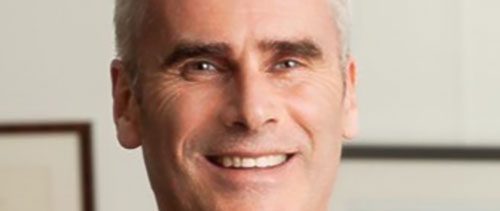- The Expert View
WHAT IS THE BEST WAY TO TRANSFORM A COMPANY'S CULTURE?
We asked the experts if company culture can be transformed through small, incremental steps or if a single overhaul the only way.More Questions
We asked the industry experts...
What is the best way to transform a company's culture?

Jeff Gothelf
Coach, Speaker & Author: Agility, Digital Transformation, Product Management & HCD
Change the incentives. Reward the behavior you want to see. This means, explicitly, moving away from “production” as the goal and “customer success” as the new target.Know more about Jeff Gothelf →

Matt Marsh
Business Breakthrough Specialist, Consultant, Coach, Author, Visiting Professor
Start with the "soft, human factors" - the ones that are infuriatingly difficult to quantify and measure. Show by example. Encourage and celebrate individuals when good behaviours are being practiced. Never, castigate people for doing the "wrong thing" in public.Know more about Matt Marsh →

Paul Hunter
Managing Director of the Strategic Management Institute
Culture is a reflection of the organisations values and purpose; it provides the moral compass to drive and deliver strategic change. A corporate strategy is grounded in a company's values and purpose. It is the best tool available to transform its culture. After all, it is the strategy that “fuels aspiration, engenders motivation, fires inspiration, clarifies direction and defines the parameters of the corporation’s purpose, ambitions, goals, and objectives.”Know more about Paul Hunter →

Adam Kingl
Author, Educator, Keynote Speaker, Advisor
Some claim that culture cannot be architected, that it just happens. This is nonsense.Know more about Adam Kingl →
The simplest and truest definition of culture that I ever heard is “shared behaviours”. So if a leadership community wishes their company to display certain behaviors as an expected norm, they only have to agree what those behaviors are and then role model them consistently.
When new, young employees join a company, they almost invariably, consciously or unconsciously, look around for those who are successful in that environment and copy the behaviors that they observe.
If everyone in a leadership team role models just a few, specific behaviours, then they are communicating beyond question what it takes to succeed and win around here.

Angela Lane
Senior Executive in Talent Management, Researcher, and Author
Transforming a culture is complex. So, it demands absolute clarity of the behaviours you want and an environment that consistently nudges us towards the desired culture.Know more about Angela Lane →
A comprehensive approach requires careful alignment of several elements and “hardwiring” those into everything you do.
Your policies outline the desired culture while programs, like performance management and compensation, must emphasise the behaviours you want to see. You must provide training and hire for skills that build competence around the behaviours you value. You need leaders to set clear expectations and role-model the behaviours. There must be consequences for those that flaunt the rules.
Finally, measure your culture and how it’s changing. Transformation isn’t achieved with a campaign. It is a long-term effort, which requires a clear vision and a supportive, integrated strategy. And time.

Nick Basannavar
Social & Cultural Historian, Head of Consulting at Included
There are many determinants of a company’s culture, but inclusive transformation usually has to factor in five key aspects:Know more about Nick Basannavar →
1. The first is strategy, meaning mapping inclusion and cultural ambitions to the overall goals of the organisation (internal and external).
2. The second is data. Unless we hold up the mirror to understand who (diversity) and how (inclusion) we are as an organisation, and unless we continually measure those datapoints and iterate our ambitions, we won’t effect cultural change.
3. Third, we have to have the right governance structures in place. That means clear accountabilities and owners for inclusive cultures.
4. The fourth determinant is leadership. Employees mimic leadership behaviours, and leaders’ behaviours have an outsized impact on the culture of an organisation. Aligning leadership groups on shared ambitions and values is critical to building the right culture.
5. Systems and processes are the fifth and final major contributor to organisational culture.
Many transformation efforts fail because they consider strategy without an implementation plan, or because they rush to train their leaders on topics such as unconscious bias without first framing it within the organisation’s overall approach and motivation for inclusion.

Erik Hiep
Managing Director (The Next Level), Author, Associate Professor at IE Business School
Winning is about getting culture right. When aligned with personal values, drives, and needs, culture can unleash tremendous amounts of energy towards a shared purpose and foster an organisation's capacity to thrive. When aligned with strategy and leadership, a strong and high trust culture drives positive outcomes.Know more about Erik Hiep →
Former US Secretary of Defense & retired Marine General James Mattis: 'There are many challenges organizations can overcome, but having a bad culture is not one of them.
Culture starts at the top, and a good or a bad leader sets the tone for how the organization does business.'

Flooris Van der Walt
Author, Executive, Mindset Transformational Coach
Creating a psychological safety to speak up and -out. To concretize this:Know more about Flooris Van der Walt →
Once we start working on our self-image and secure who we as leaders are, we immediately can allow other opinions, views, and perspectives to be put on the table without defending or projecting our insecurities.
Once this is established a company’s culture transforms and stays current with the changes in the environment. To transform a company’s culture, means to me, transform the insecurities of the leaders to become the anchors of the culture.

Mark Fritz
Leadership Expert, Mentor, Keynote Speaker
A company culture is really shared expectations, of what we want to achieve together and how we behave with each other.Know more about Mark Fritz →
What we want to achieve together is driven by a strong vision/direction that comes from everyone having clear mental picture of the future and how they play a part in delivering it. How we behave with each other is driven by strong values/principles that drive our daily behaviors and habits. The speed at which you can change the culture is based on how well you (the leader) and your company’s role models embrace the company’s vision/direction and values/principles.
You can change a culture quickly when you and your role models “live” the culture daily, as everyone begins to copy both you and your role models.
Related Questions
ASK OUR EXPERTS
Headspring is a joint venture between the Financial Times and IE Business School established in 2015. Our highly influential FT journalists deliver a unique perspective on the events that shape the world of business, and our IE faculty brings an entrepreneurial mindset with a sharper edge and greater impact through technological immersion and a culture of innovation.